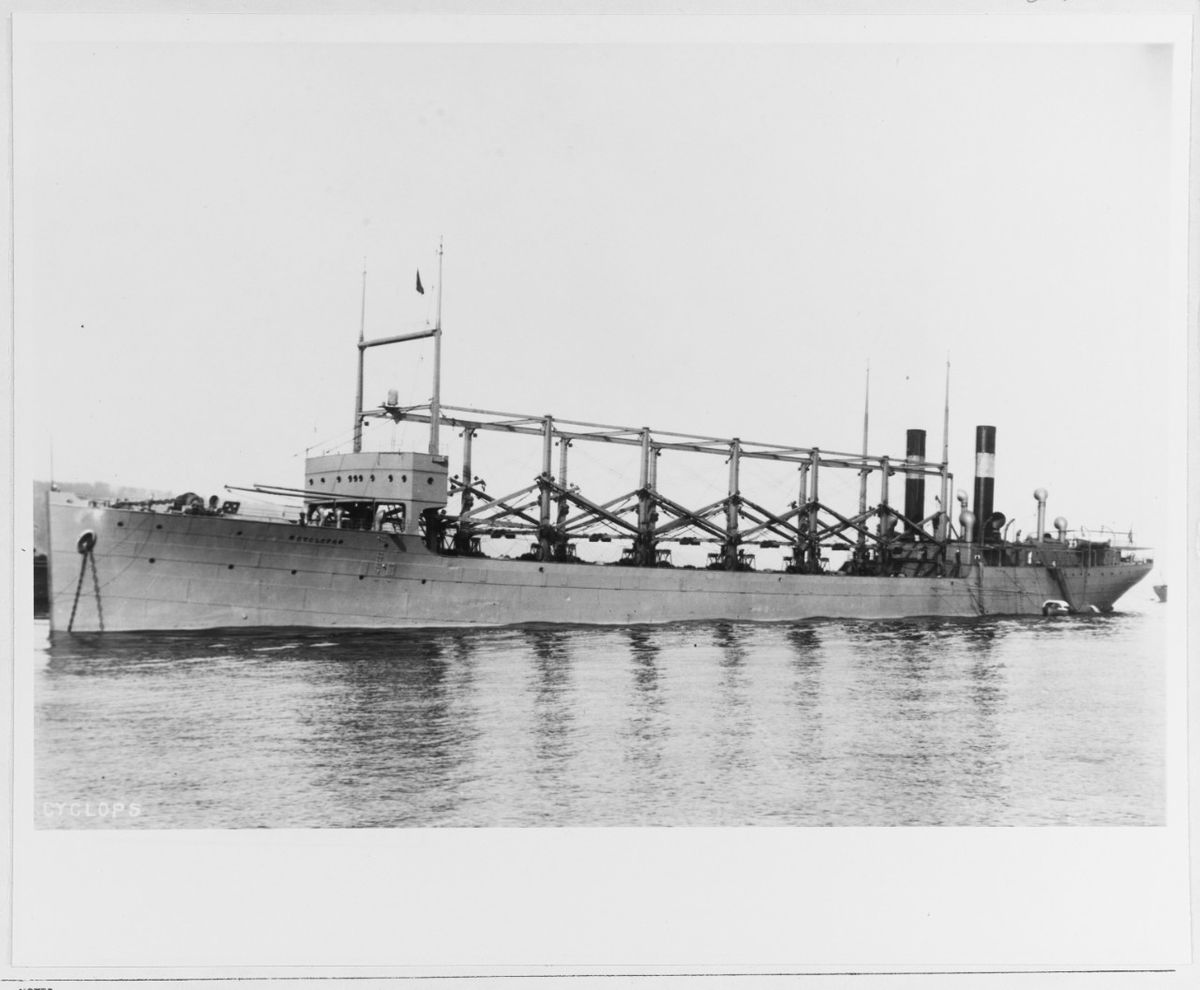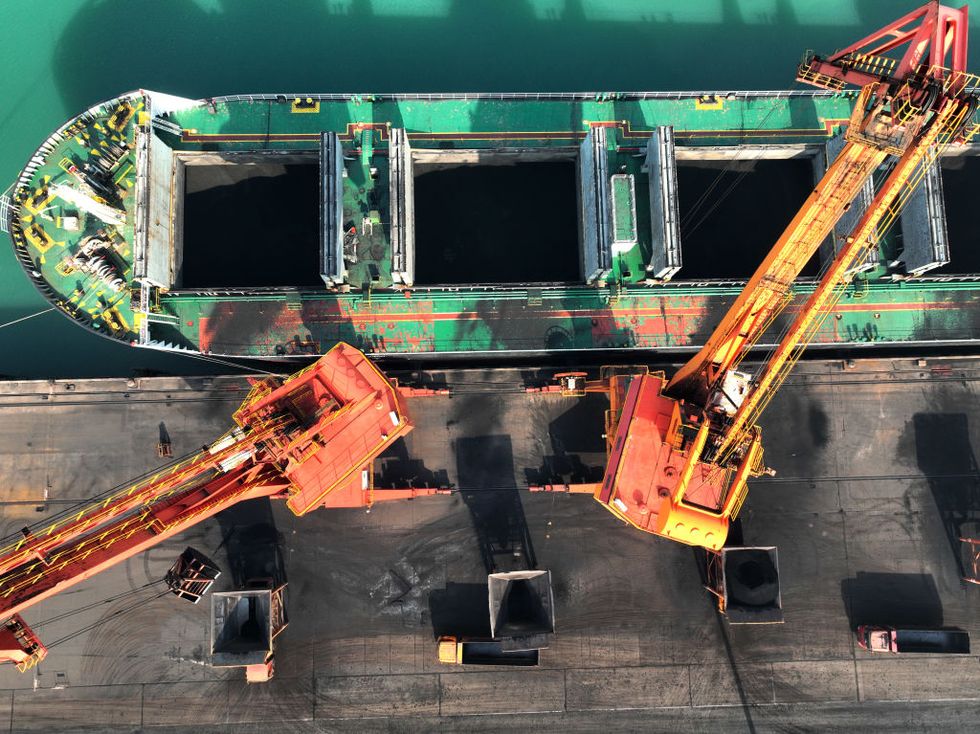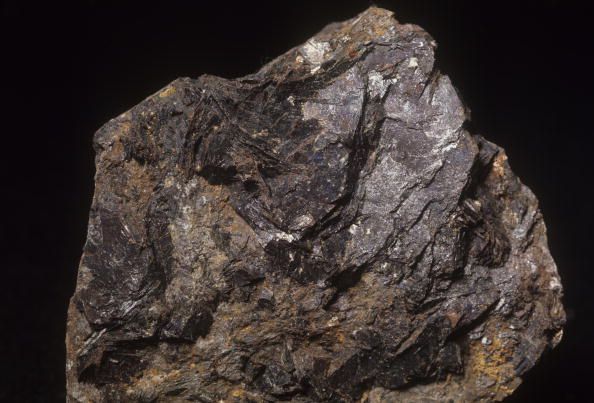
- The USS Cyclops disappeared in 1918, a mystery that has never been explained.
- The ship, built to haul coal for steam-powered ships, was carrying a shipment of ore when she vanished.
- Various theories on her disappearance abounded, from U-boats to the Bermuda Triangle, but her load of heavier than usual ore was probably her undoing.
One of the last major mysteries of the U.S. Navy is the loss of the coal ship USS Cyclops. The ship, her name torn from Greek legend, went missing in 1918 during what should have been a routine mission in friendly waters. Instead, the 540-foot-long ship and her 309 crew vanished—without a trace. Why she went down is as big a question as where she lies—Cyclops is almost certainly the last big Navy ship to be listed missing.
In the early 20th century, most of the U.S. Navy’s big warships used coal, not fuel oil, to heat their boilers and provide power. Ships like the Nevada and New York-class battleships and Montgomery-class cruisers were dependent on ships known as colliers to keep the fleet steaming. Colliers carried thousands of tons of coal at a time and could transfer up to two tons to the decks of other ships via enormous clamshell buckets.
USS Cyclops was one such collier. Cyclops displaced 19,360 tons fully loaded with coal. Although she had a relatively simple job, the lack of mechanization meant she was manpower-intensive, requiring a crew of more than 300. The modern Navy’s Henry J. Kaiser class fleet oilers, by contrast, are 50 percent bigger, displace twice as much fully loaded, but have a crew of just 89.
The Soviet Union’s Secret Space Cannon
Cyclops served the U.S. Navy’s Naval Overseas Transport Service, supplying coal to major seaports used by Navy warships. On her final voyage on January 28, 1918, the ship had supplied 9,960 tons of coal to the South American Patrol Squadron in Rio de Janeiro, Brazil. The ship picked up 11,000 tons of manganese—a metal invaluable in the production of iron and steel—for her return voyage to Baltimore, Maryland. Although Cyclops was a collier by profession, the United States’ entry into World War I spurred a hunger for raw materials for war production.
On the way home, the collier made a stop (some say unplanned) in Barbados for coal. Strangely, the ship sailed south toward points unknown, not north toward the continental United States. Cyclops and her crew were never seen again.
A number of theories have surfaced to explain the sudden loss of the warship—so sudden the ship apparently never sent out a distress signal, despite having a radio manned 24 hours a day. One theory is that a rogue wave or freak storm broke the ship in two, and the high density nature of the manganese cargo quickly took the two halves underwater. Yet there is no record of underwater seismic activity that could have spawned such a wave, and the incident took place outside of hurricane season.
Keeping Ships Afloat
- The Felicity Ace Sank With $400 Million in Luxury Vehicles on Board. Why Do These Massive Cargo Ships Keep Sinking?
- The Deep Math That Can Help Cargo Ships See Into the Future
- Duck Feathers Are the Next Revolution for the World’s Biggest Ships
Another theory is that the ship was sunk by enemy action. German Navy u-boats prowled the Atlantic and by the end of the war had destroyed almost 5,000 merchant ships, equal to 30 percent of the world’s shipping. The submarines attacked enemy ships with both torpedoes and mines. However, no u-boats are known to have been operating in the area Cyclops was lost, and no u-boat reported having sunk her. A ship hit by a torpedo or striking an uncharted minefield would also leave behind debris from the explosion, and there was no sign of either in the ensuing search.
For years the disappearance of the Cyclops was blamed by some on the Bermuda Triangle, a mysterious zone in the Atlantic and Caribbean that allegedly had many mysterious disappearances, UFO sightings, and other paranormal events. The loss of the Cyclops, as well as the infamous disappearance of Flight 19, was blamed on mysterious forces whose origin included extraterrestrials, interdimensional vortices, and even the lost civilization of Atlantis. While we can’t rule out such explanations for sure, in this case the simpler, more obvious explanation—that doesn’t rely on UFOs and Atlantean relics—is much, much more likely.
The Most Likely Scenario
The best explanation for the loss of Cyclops is that the ship’s heavier than usual cargo was stored fore and aft, stressing the ship’s hull in the center, and that rough waters could have split her in two. This uneven loading could have taken place because the captain had placed the ship’s executive officer—the only officer on board with experience loading manganese—under arrest after a minor argument; the captain was known for irrational and bullying behavior. Anyone else could then have overseen the ship’s loading, including the captain, who had little knowledge of how to store the heavy and magnetic ore.
Why did no crew survive the incident? The ship is believed to have sunk at nighttime, when only about 10 percent of crew would be awake and on duty. It’s generally assumed that under the circumstances, the weight of the cargo would have snapped in half in any sinking scenario. If the ship sank rapidly, pulled under by her heavy cargo, the majority of the crew would have been asleep and below decks. The crew may not have had time to prepare and man lifeboats before the ship went under.
Cyclops is generally regarded as the last major U.S. Navy warship to lie undiscovered in the world’s oceans, and after the recent run of newly rediscovered warships, like the USS Indianapolis, it seems likely the ship will be found eventually. Cyclops was a large ship and, thanks to the manganese, should have an unusual magnetic signature. When it is rediscovered, we’ll likely find that neither aliens nor Atlantean technology was responsible, only human error.
from JC’s Naval, Maritime and Military News https://ift.tt/w6a2txM
via IFTTT



